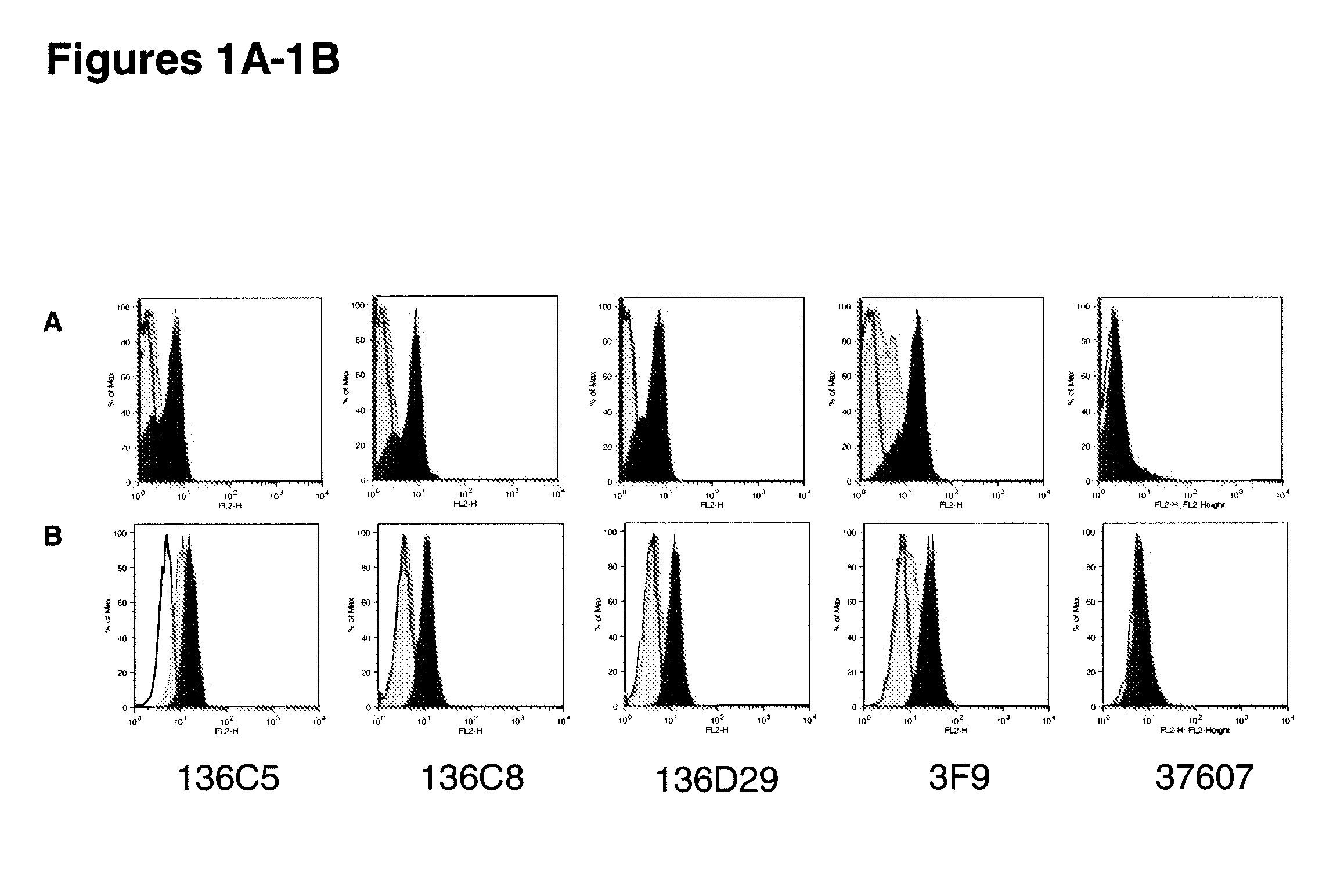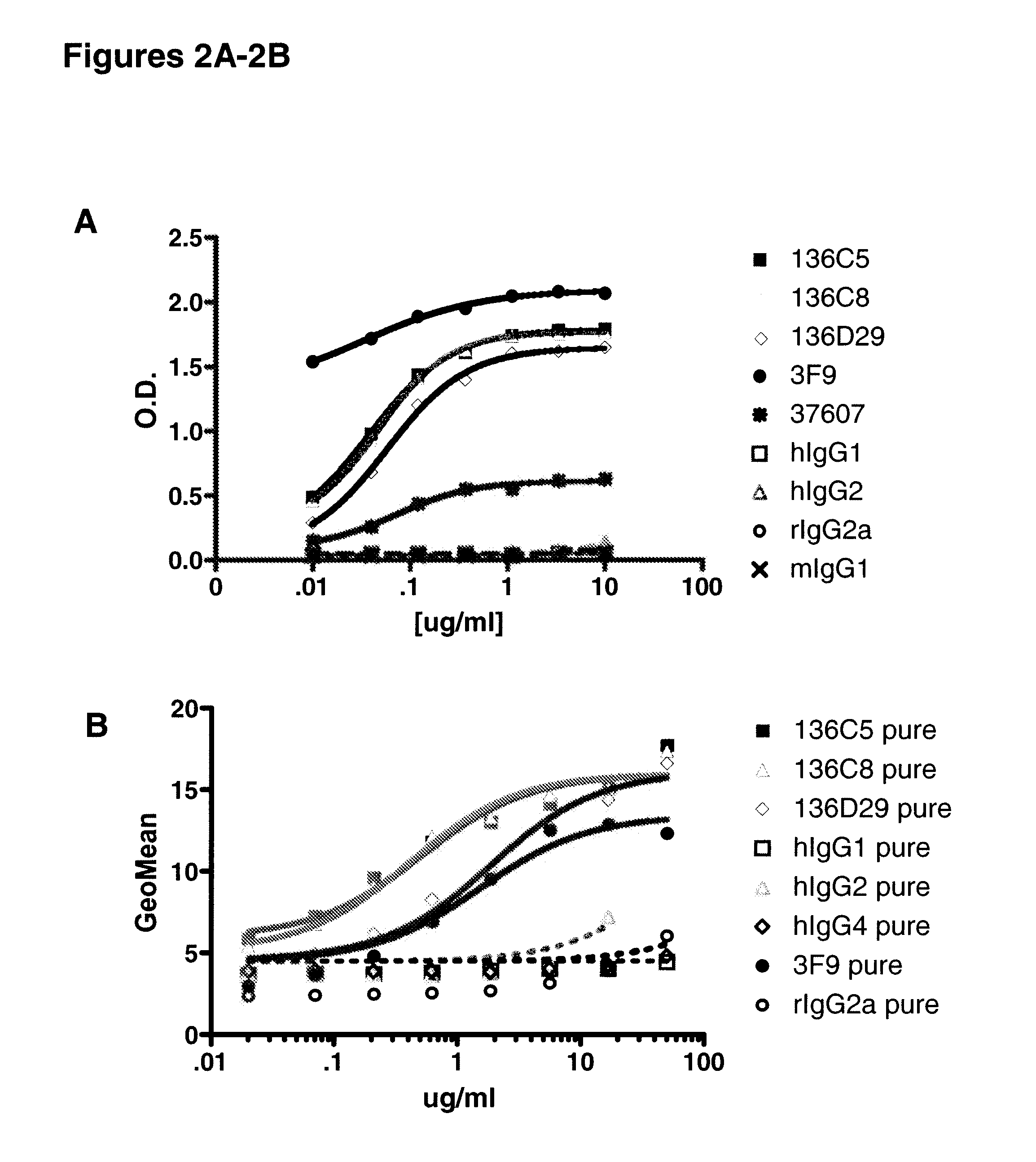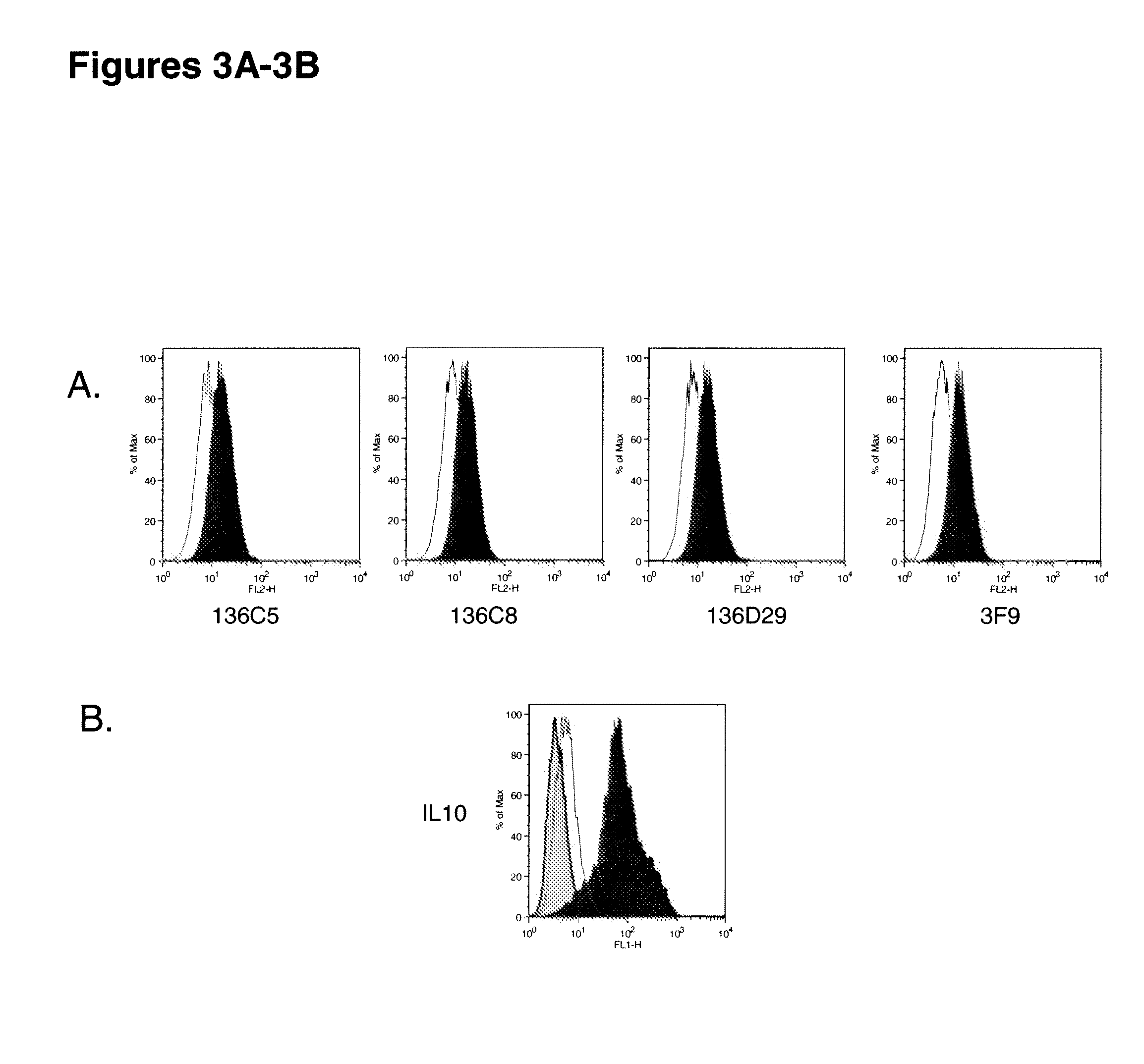Interleukin 10 receptor, (IL-10R) antibodies
a technology anti-inflammatory response, which is applied in the field of interleukin 10 receptor, (il10) antibodies, can solve the problems of local and/or systemic suppression of inflammatory response, decrease of anti-pathogen immune response effectiveness, etc., and achieve the effect of increasing the production of th1 cytokin
- Summary
- Abstract
- Description
- Claims
- Application Information
AI Technical Summary
Benefits of technology
Problems solved by technology
Method used
Image
Examples
example 1
[0262]This example includes a description of various materials and methods.
[0263]Human IL-10Rα cloning: The full length IL-10Rα MGC clone in pCMVsport6 (Accession number BE272922) was purchased from Invitrogen Corp. (Carlsbad, Calif.) and the full-length IL-10Rα open reading frame was subcloned by polymerase chain reaction [primers: hIL-10Ra F48 EcoRI and hIL-10Ra R1857 NotI (Table 1)] from the MGC clone. The amplified product was digested with EcoRI and NotI restriction enzymes and subcloned into pcDNA3.1(+) (Invitrogen Corp.) previously digested with EcoRI and NotI. The sequence encoding the human IL-10Rα extracellular domain was amplified from pCMVsport6 vector by polymerase chain reaction [primers: hIL-10R Forward and hIL-10R Reverse (Table 1)]. The amplified product was digested with EcoRI and BglII restriction enzymes, which were included in the primers, and the human IgG1 Fc sequence was excised from the pV11392.fc vector using BglII and NotI restriction enzymes. The shIL-10R...
example 2
[0332]This example includes a description of exemplary antibodies that bind to IL-10Rα.
[0333]Isolation of Human Anti-IL-10Rα Antibody Genes: Cultured hybridoma cells (136C5, 136C8 or 136D29), which produce 136C5 (IgG1), 136C8 (IgG2) or 136D29 (IgG4) antibodies respectively, were collected by centrifugation. Total RNA was purified from these cells using RNeasy kit (QIAGEN Inc., Valencia, Calif.) following the manufacturer's instructions. SMART RACE cDNA Amplification Kit (Clontech Co., Ltd., Palo Alto, Calif.) and the reverse transcriptase SuperScriptll (Invitrogen Corp.) were used for cloning of cDNA that encodes the variable region of the immunoglobulin genes from total hybridoma cell RNA. Briefly, first strand cDNA was prepared by reverse transcriptase from 2 microgram of RNA. This cDNA was used as a template for polymerase chain reaction (PCR) to amplify the variable region and a part of the constant region of heavy and light chains (VH and VL, respectively). The amplified sequen...
example 3
[0367]This example includes a description of characterization of human monoclonal antibodies that bind to IL-10Rα.
[0368]KM Mice™ were immunized with soluble recombinant hIL-10Rα:hFc in RIBI. Several of the mice raised anti-human IL-10Rα specific antibodies, with a range in human IgG IL-10Rα specific titers. Splenocytes from the highest responders were fused with myeloma cells to generate human anti-human IL-10Rα producing hybridomas. The production of anti-IL-10Rα antibodies was determined by both ELISA and flow cytometry using recombinant soluble hIL-10Rα and CHO-hIL-10Rα transfectants, respectively. The positive hybridomas were cloned by limiting dilution to yield monoclonal hybridomas. Three human antibodies were further characterized for relative binding affinity for human IL-10Rα, the ability to be blocked by human IL-10 binding to the receptor in vitro, competition with each other, cross-reactivity with non-human primate IL-10Rα, and neutralization of IL-10 in vitro. These ant...
PUM
| Property | Measurement | Unit |
|---|---|---|
| density | aaaaa | aaaaa |
| density | aaaaa | aaaaa |
| volume | aaaaa | aaaaa |
Abstract
Description
Claims
Application Information
 Login to View More
Login to View More - R&D
- Intellectual Property
- Life Sciences
- Materials
- Tech Scout
- Unparalleled Data Quality
- Higher Quality Content
- 60% Fewer Hallucinations
Browse by: Latest US Patents, China's latest patents, Technical Efficacy Thesaurus, Application Domain, Technology Topic, Popular Technical Reports.
© 2025 PatSnap. All rights reserved.Legal|Privacy policy|Modern Slavery Act Transparency Statement|Sitemap|About US| Contact US: help@patsnap.com



